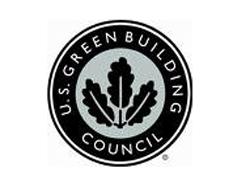City-Based Green Building Programs Increase
Washington, DC, December 3, 2007--Since 2003 the number of cities with green building programs has risen from 22 to 92 for an increase of 418%.
In an effort to examine the eco-friendly initiatives of U.S. cities, the American Institute of Architects (AIA) commissioned a study of communities with populations of greater than 50,000 to spotlight the growth and effectiveness of green building policies. The report, Local Leaders in Sustainability, analyzed 661 communities’ best practices, strategies and trends, as well as provides recommendations for cities that are looking to implement green building programs.
Key findings:
• 1 in 7 cities surveyed currently have green building programs
• Number improves to 1 in 5 by next year with current projections
• 39% of citizens live in cities with green building programs
• 36 cities are in an advanced stage of developing a green building program
“Sustainable design practices have the potential to transform the built environment from an energy intensive past towards a more energy efficient, green future,” said Paul Mendelsohn, AIA vice president, Government and Community Relations.
“Technological advances now allow for the design of buildings that are efficient, modern, possess great aesthetics and are financially viable. High premiums for green buildings are no longer the case as costs are coming more in line with traditional building practices.”
Case study excerpts:
• Portland offers income tax credit for green building and projects for energy conservation, recycling, renewable energy and cleaner fuels. The Oregon Dept. of Energy has awarded 13,000 tax credits of 35 percent of eligible project costs.
• San Francisco established Generation Solar program to amend the code and streamline the process for solar permitting in residential applications. Program provides assistance with design and installation and has resulted in nearly 600 solar installations city wide.
• Scottsdale was first city to mandate LEED Gold for municipal buildings. In 2005 one-third of all new single-family permits adhered to green building standards with 1,123 green single-family and 20 multi-family homes having been completed as of 2007.
• Chicago has more LEED registered projects than any other U.S. city. Their Green Roof Program offers $5,000 grants to help with the planning and installation of green roofs, and as of 2006 there were over 250 public and private green projects in place, being designed or under construction, which amounts to approximately 3 million square feet.
• Austin established the first green building program in the country. A climate protection plan will have city buildings running on 100 percent renewable energy by 2012 and completely carbon neutral by 2020.
• Atlanta had the most LEED buildings per capita in the country in 2006. Their EarthCraft Communities program is a community guideline that emphasizes walkability, environmental site plan development, and an overall integrated planning approach.
Related Topics:The American Institute of Architects
